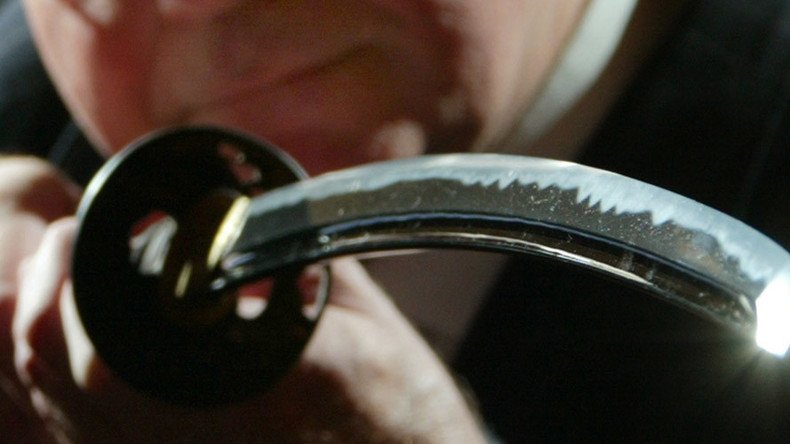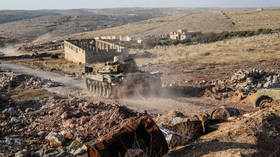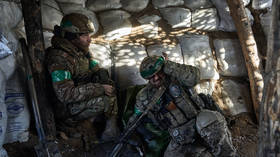Katana-wielding pacifism? New Japanese Self-Defense Force badge linked with WW2 atrocities

A new Japanese emblem has come under fire, with critics saying that an unsheathed katana sword brings up bitter memories of World War II, while the army argues it is a symbol of “proactive pacifism” that refers to similar traditions of other militaries.
The emblem, which was introduced by the Japanese Ground Self-Defense Force (GSDF) earlier this year, features a red rising sun with a golden cherry blossom underneath.
However, it is the unsheathed Japanese katana sword – a curved, single-edged blade with a circular or squared guard and a long-grip – with its crossing scabbard that has drawn so much criticism.
“In Asian countries where people remember the swords of the Japanese imperial army, they will regard this as the return of pre-war ghosts,” said Yoko Shinohara, a 66-year-old activist who launched a Change.org petition objecting to the military emblem, as quoted by The Times.
New JSDF emblem "Sakura Katana" is not quite chrysanthemum and sword but it's close.https://t.co/vQcgvMwFcppic.twitter.com/jNONJnTTkr
— Ceiling Gallery (@tokyoscum) May 26, 2016
“A Japanese sword removed from its scabbard identifies the GSDF as an organization that loves tools of killing. It will provoke huge antipathy at home and abroad,” she added.
“I wonder if any study was undertaken about how the peoples of Asia would feel about the emblem,” playwright Oriza Hirata told Asahi Shimbun.
Hirata, who contributed to the creation of the emblem of the Japan Tourism Agency (JTA), which also features a rising sun, said that the JTA has been seeking feedback from the governments of South Korea and China, where people still have bitter memories of war crimes committed by the Imperial Japanese Army during the World War II.
Really? I just received an e-mail for online petition to prevent use of JSDF's new emblem. Thought it was a joke.. pic.twitter.com/BTu64HITUY
— kosasaki (@Ko_KoSASAKi) June 24, 2016
The military made a somewhat awkward statement dismissing the accusations.
“The emblems of the armies of foreign nations often use guns and bayonets,” a GSDF public relations officer told Asahi. “We thought it would be appropriate for the [army] from the standpoint of displaying a sense of Japanese [spirit].”
The official added that the badge is meant to symbolize what he called the “proactive pacifism” promoted by Japanese Prime Minister Shinzo Abe.
Super Samurai: Robot beats Japanese master swordsman, shows amazing skills (VIDEO) http://t.co/1dhMlYxCQOpic.twitter.com/qPysoNLLkt
— RT (@RT_com) June 6, 2015
Japan’s post-WWII constitution bans its “land, air or sea forces” from taking offensive action, stipulating that Japan’s “self-defense forces” can only fight to repel a foreign invasion. Under the Abe administration the government had been actively seeking to allow the GSDF to deploy abroad to fight with its allies in their foreign interventions.
However, the first mention of the katana dates back to as early as the 12th century in medieval Japan, the time of the samurai, hence its distinctive appearance is not necessarily inherently related to World War II-era Japanese soldiers.
Other militaries across the world, including the Canadian Armed Forces and British Army, have consistently used unsheathed swords, sabers, or arrows in their emblems – in apparent reference to glorious, yet violent, bygone eras.












